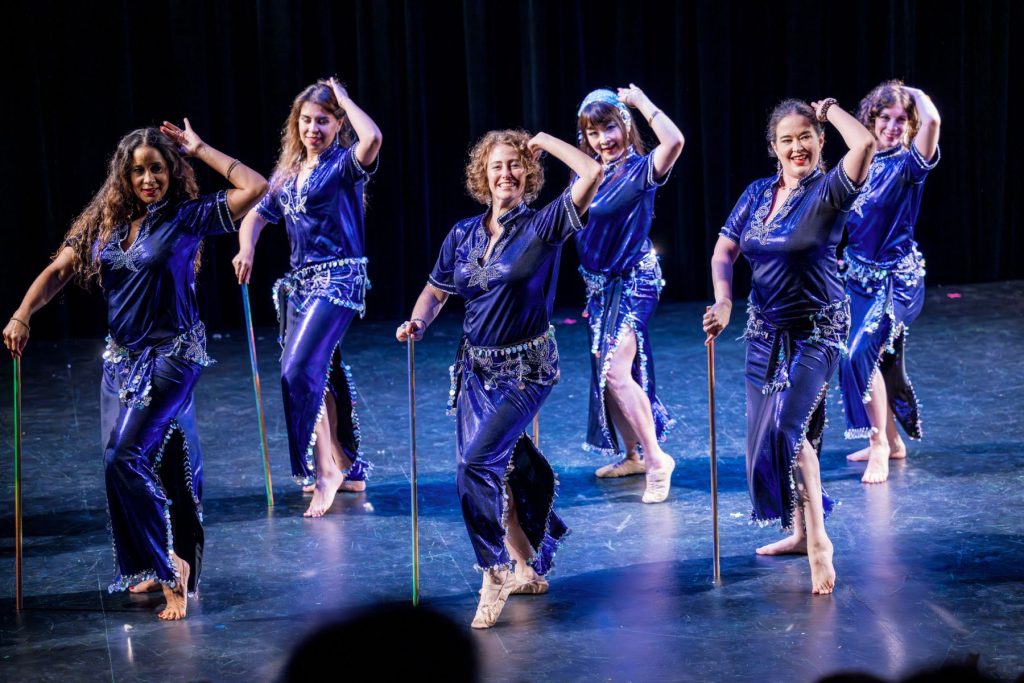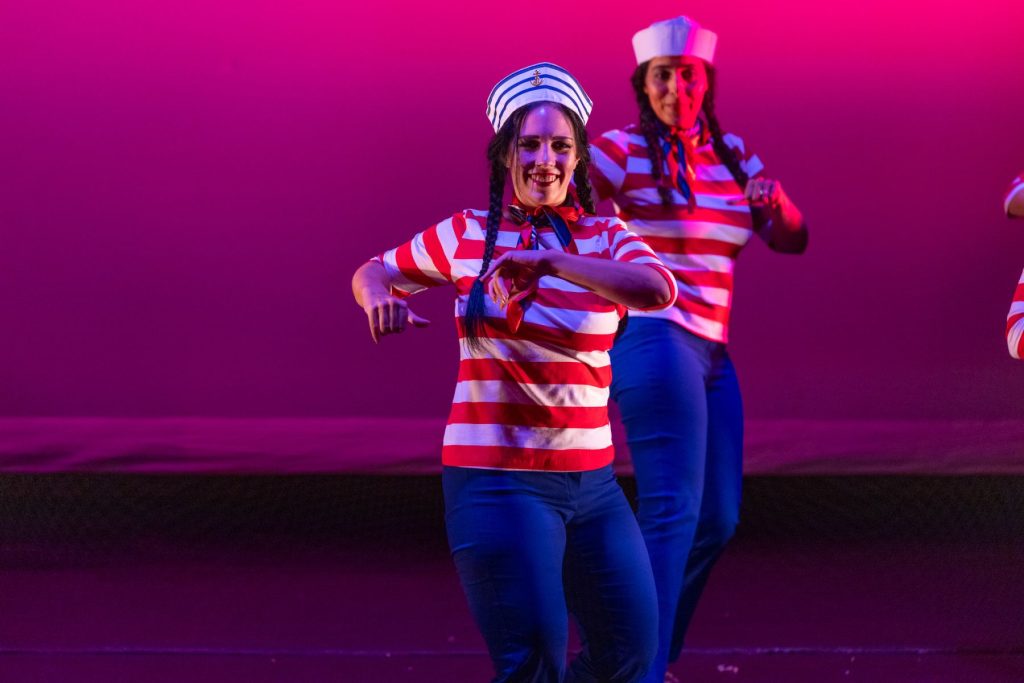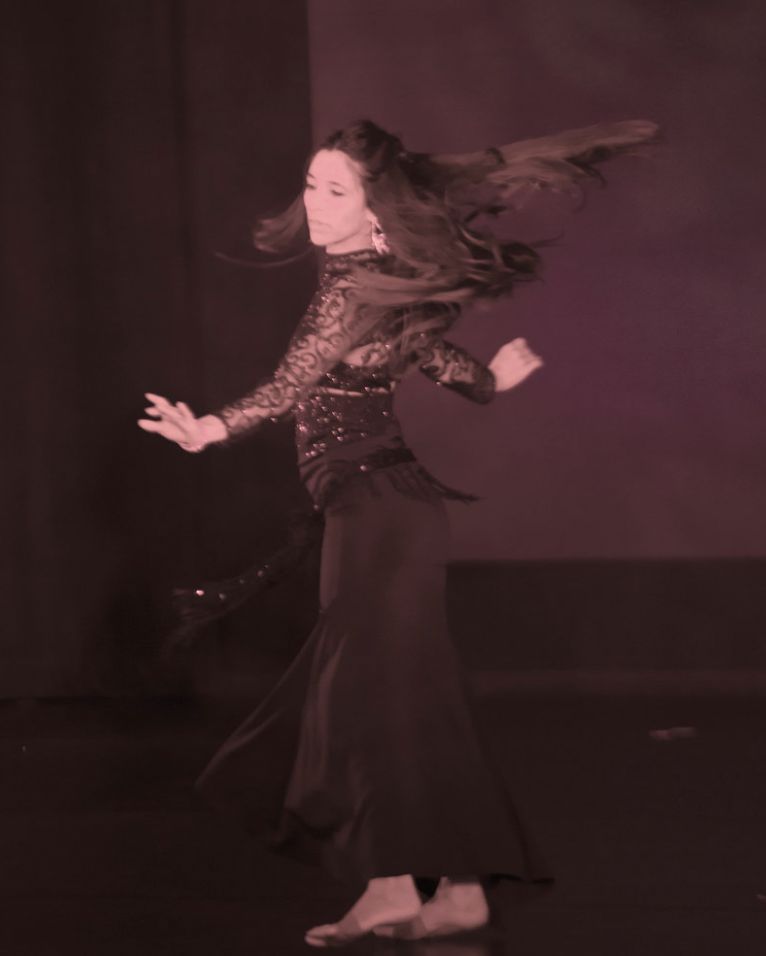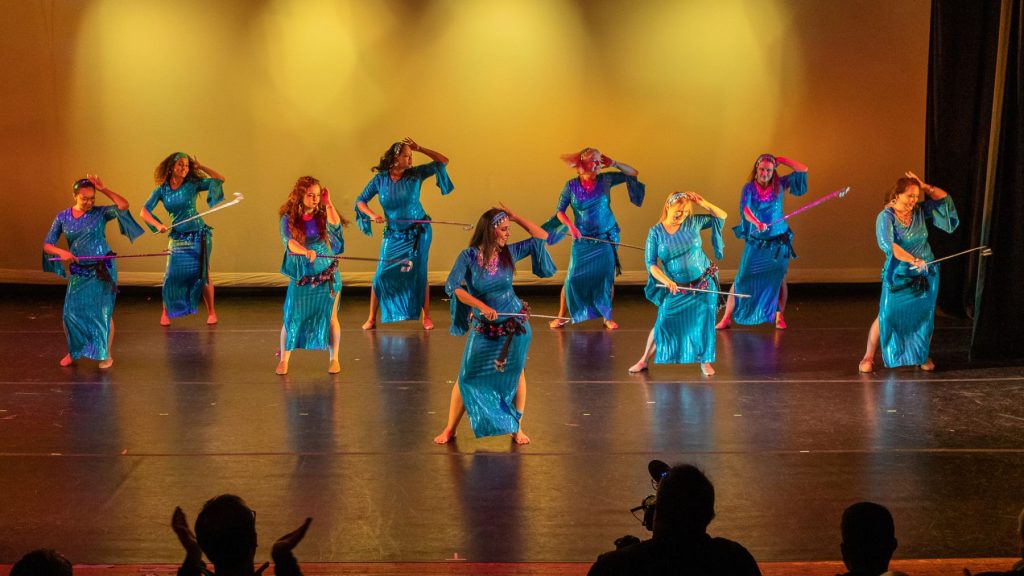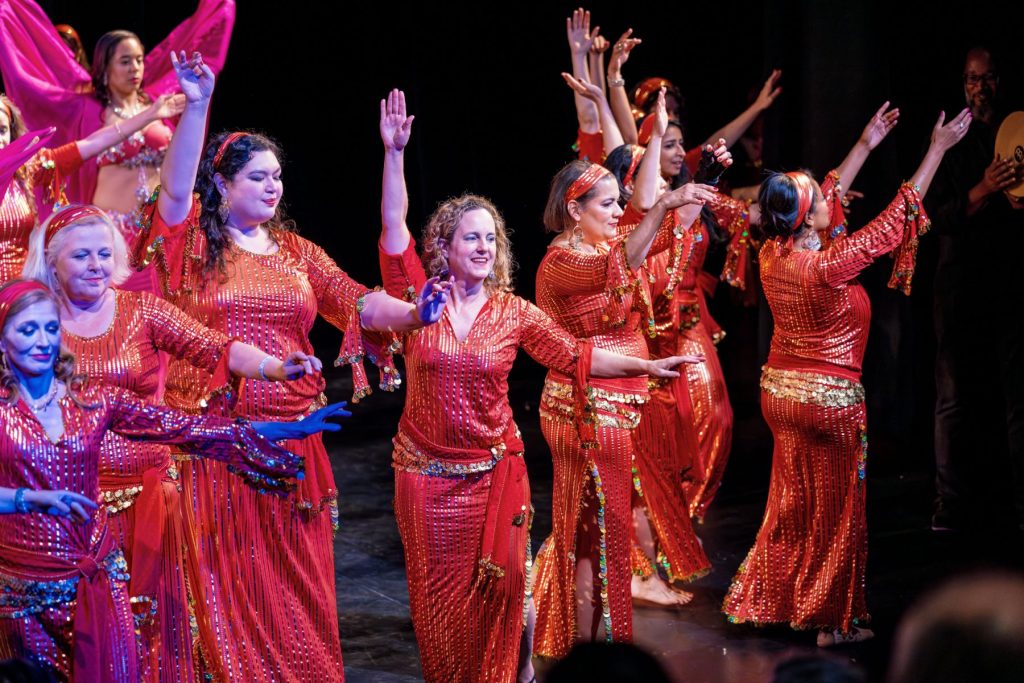Deepen your dance this spring by studying and performing several traditional and folkloric origins of modern belly dance.
Studying folkloric and traditional dance is important for belly dancers as it not only enriches our dance repertoire but also fosters a deep understanding of and appreciation for cultural roots and the authentic origins of our art form.
Delving into traditional styles will help you develop your technique, as many classical movements and stylizations form the foundation of contemporary belly dance
Building a strong understanding of folkloric styles and history is highly recommended for any student aiming to achieve higher levels of technical proficiency.
Read on for classes and performance opportunities available at Sahara Dance this spring to study the traditional and folkloric styles!
Technique classes
Folkloric technique with Leilah Moon
Time: Mondays, 7:15pm
Take a tour of the Middle East and North Africa through dance! This class will include fun combinations from a variety of folk dance forms from all across the Arab world, including Nubian, Simsimiyya, Muwashahat, Hagallah, and Fallahi. We will spend a few weeks getting acquainted with the rhythms, social and performance context, and unique flavor of each folkloric style—no previous folkloric experience is required.
Level: Appropriate for low intermediate and up. Previous completion of Beginner II Technique classes (or equivalent) is required.
Register today
Muwashahat Rhythms and Reda Technique with Jennifer
Time: Wednesdays, 6:15pm
An Egyptian pioneer of dance theater and co-founder of the Reda Troupe, Mahmoud Reda, and his principal dancers created a genre of dance that embraced many styles throughout the region.
As a soloist, choreographer, and director of hundreds of productions from the Golden Era of Belly Dance and Egyptian Cinema, Mahmoud Reda is universally acclaimed for his dance style and appeal. His technique and choreographies have had tremendous artistic, social, and cultural impact on Egypt, and his work has inspired and shaped the art form of belly dance as we know it today!
This series will focus on technique clarity and quality of movement and how it relates to rhythm and expression of emotion in dance. Each class will include strengthening, conditioning, and alignment drills, as well as combinations and exercises to allow for dancer development. The series will specifically draw upon Reda technique and Muwashahat rhythms and combinations in addition to foundational intermediate/advanced techniques and practice.
Whether this is your first time learning Reda combinations and Muwashahat rhythms or you’re refreshing your muscle memory – you’ll surely enjoy this session!
Level: Appropriate for intermediate/advanced level students; low intermediate/intermediate level students who want to be challenged are welcome as well.
Performance classes
Folkloric performance (Raqqesat Arabi) with Leilah Moon – Saidi
Time: Mondays, 8:15pm
Saidi dance, originating from Upper Egypt, is known for its lively and energetic style, characterized by powerful footwork and the use of a cane or stick called an “assaya.” Students will explore the fundamental techniques and gestures that define Saidi dance, including bold hip movements, graceful spins, and Tahtib martial arts-inspired arm patterns, as well as tips and tricks for dancing with a cane.
Master the unique rhythms and musicality that accompany this dance form and immerse yourself in the cultural heritage and traditions of Egypt.
Costumes: The teacher will set costuming parameters in consultation with founding Raqqesat Arabi members. Consideration will be given to select costumes that will work for future performances by Raqqesat Arabi.
Level: Low intermediate to intermediate
Register today
Baladi performance with Florencia
Time: Wednesdays, 7:15pm
Baladi is a traditional style of Egyptian belly dance characterized by its earthy, improvisational nature and close connection to the cultural and social contexts of the community.
In this performance class, you will learn the specific movements that characterize this dance style and explore the emotional expression that is important for Baladi, while learning a 3-4 minute choreography that will be performed on April 27 at the Under the Desert Moon Show.
Costumes: Costuming will be the red and gold galabeya (dress as shown in the photo above) and the hip scarf Sahara Dance performers wore for the World Culture Festival performance. The costumes will be available for purchase for those who don’t have them.
Level: Low intermediate to intermediate dancers

